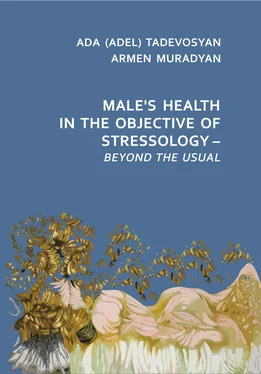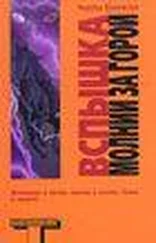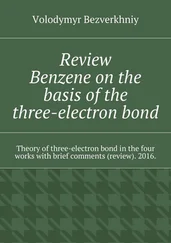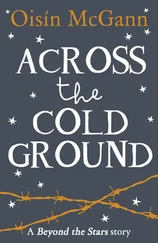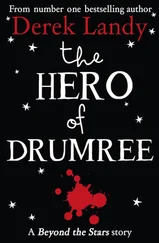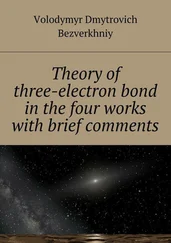Anxiety and pain are signals of danger but of different levels: pain is a signal of danger to the body, and anxiety – for the psyche of an individual. These protective reactions, similar in their discreteness, are due only to the autonomous bioelectric mechanism of the first phase of stress reaction. If there is a fixation of pain sensory stimulation, then it becomes obsessive and can be attributed to a bodily flashback symptom.
Studies of recent years make it possible to understand why the amputated limb hurts; why symptoms of herpes persist after the disappearance of all objective manifestations; why a pain syndrome persists in some people when there is not even a scar left from an injury or wound, not to mention some internal injuries. A differential sign that distinguishes the pain “flashback” from other numerous manifestations of the pain syndrome is its paroxysmal character independent of place and time and not changing its qualitative characteristics: localization, the character of pain over a long time.
As far back as 1894, the German neuropathologist and psychiatrist Franz Kisel showed that nerve injury led to significant changes in glia cells in the area of nerve fiber switching in the spinal cord. At the same time the number of microglia cells increased, astrocytes became denser, and thick bundles of fibers that strengthen cytoskeleton appeared in them. A hundred years later, in 1994, Stephen Meller from the University of Iowa proved the participation of glia astrocytes in the formation of chronic pain. Further studies shed light on the mechanism of this phenomenon. Glia cells secrete various substances capable of increasing the excitability of neurons of spinal ganglia and spinal cord responsible for the transmission of pain sensitivity. Such substances include also growth factors. It has been found that glia cells perceive enhanced impulse from neurons as a sign of their functional tension. With these data, a real opportunity appeared to explain one of the mechanisms of obsession (involuntary repeatability). According to them, with bodily injury, the pain “excitability” in the glia of the spinal cord can persist for too long and then the neurons of spinal ganglia continue to send pain impulses in the absence of external irritants. These effects resemble mental flashbacks in PTSD. It can be assumed that the glia of the brain as a memory carrier and its cells or groups of cells retain enhanced excitability. The latter is considered as the main cause of neuropathic pain in neurology. The injured body, when confluence of some factors, is able to preserve the memory of trauma at different levels of pain formation, using different links of the same process – the process of feeling pain. The aftereffect of traumatic injury in the form of a trace pain “echo-stressor” can become stuck in glia cells of the spinal cord, astrocytes and microglia cells. The glia cells themselves are not capable of impulses, but they are capable of capturing neurotransmitters – substances released by the endings of nerve fibers and providing signal transmission from one neuron to another.
Example:All my life, as long as I can remember, I have been sensitive to the pain of others at the bodily level. Someone fell – I have pain and feel creepy all over, got wounded – synchronously with him I feel pain in the body. Once in the third year of the Medical Institute during a practical lesson in surgery we were taught spinal puncture. As soon as the needle entered the spinal canal of the patient – I reacted: having experienced pain, I was covered with cold sweat and fell into a subconscious state. Becoming a professional, I began to analyze the events of childhood, life, memories. Looking back at everything that happened in my childhood, I recall my first experience of feeling pain in the body, the experience of curiosity and pain. It was the first year after the war. My father was awarded a sanatorium trip. I was 9 years old then, and father took me to Georgia, to the Black Sea. It was a fairy world where I was amazed at everything: palm trees, salt water in the sea, huge white flowers on the trees – magnolia, in the air the aroma of oleander, roses, flourishing lemons and oranges. And I touched everything, picked flowers, leaves; I ate melons and watermelons for the first time in my life. One evening guests came to us and while they were sitting at the table I went out into the garden. The sun had already set, twilight came and the shape of the surrounding trees and bushes became vague. I stopped at the plant which I had never seen before, it was very strange, and at the top there was a flower of marvelous beauty and some other fruits. I grabbed the plant with both hands, pressed it to me and the same moment screamed, screamed in pain in the whole body, incomprehensible, sharp and stabbing. Hundreds of needles pierced me. It was cactus. I screamed, but I could not get rid of the pain and the plant. The dog ran from me to the house and barked loudly. I screamed in pain, it barked until the adults heard. My memory did not keep everything, I remember only that I was given cognac and all amicably began to pull out bundles of thorns that pierced my body. Even the next day my grandmother still found needles. Since then, I hate cacti and synchronously feel pain when someone nearby feels it. Even when I watch a TV program about “black humor” I am pierced with pain or shiver all over if suddenly someone fell or got injured.
The examples cited above unveil the mysteries of intracerebral activity and make it possible to look at facts differently. If a person encounters the event that traumatizes his psyche for the first time, the mechanism of repression (the psychoanalytical term and mechanism) is triggered. Repression (suppression) is one of the mechanisms of psychological defense. It is triggered as an active, motivated elimination of something from consciousness into the unconscious, usually manifesting itself in the form of unmotivated forgetting or ignoring some moments of a traumatic situation due to protective inhibition (neurophysiological mechanism). Clinically these “forgettings” are described as various amnesias (A. Tadevosyan, 2011).
Since memory lapses violate the integrity of the inner mental world of a traumatized person, in everyday life, specialists have the expression “holey memory”. Repressed experiences, let’s conditionally call them “lost memory puzzle” are in a “semi-active state”, in all probability, making up operative memory. The stored information as operative memory is between the consciousness and unconscious (in the pre-consciousness, according to Freud) and systematically breaks into the sphere of consciousness through nightmares, flashbacks that are described as symptoms of PTSD. We view these mental paradigms not as psychopathology but as a normal functioning of the mental apparatus in a state of post-trauma, which has a threefold meaning.
1. The appearance of nightmares, flashbacks makes it possible for the consciousness to “fill in the gaps in the memory”, to restore the integrity of the mental world torn by amnesias. Cognitive processing of them, spontaneous or in the office of a psychoanalyst, is the therapy of the trauma itself.
2. At the same time recurring memories together with the work of consciousness form a leading reflection as a person’s readiness for repeated traumas, thereby reducing their destructive impact on the psyche; and this is an increase in stress resistance.
3. If cognitive processing of the obtained traumatic experience does not occur timely (within 6 months on the average) and in the right direction, the appearing phenomena are fixed and can acquire an obsessive character (the mechanism of the mental apparatus) becoming symptoms of post-stress disorder.
Cognitive echo-stressor. This type of traumatic event memorizing is of a conscious nature. A traumatic event can be retained in the form of memories or images that the individual randomly recalls in memory. When alone, he can mentally “play back” the events, and by active use of his imagination, man can distort reality. Imagination and fantasies can reduce a pathogenic effect of a stressor using one of the mechanisms of psychological defense; however they can also amplify a traumatic event, resulting eventually in affectivity growing like a snowball. Having been processed by consciousness, recollections acquire a personally significant meaning and can entirely devour a person. A constructed subjective mental reality replaces the objective reality, forcing a person to adapt within the framework of its new priorities. This kind of mental “echo” has an arbitrary character and results from man’s evolution.
Читать дальше
